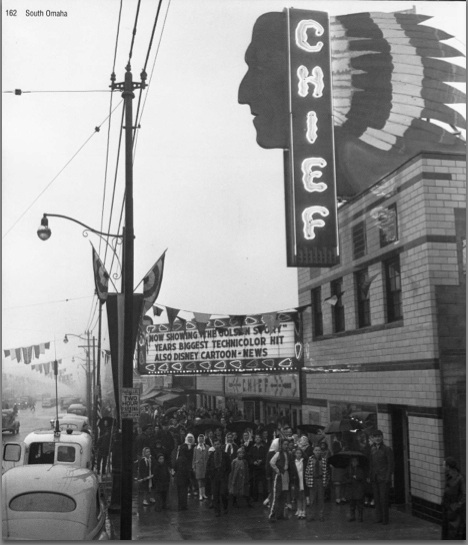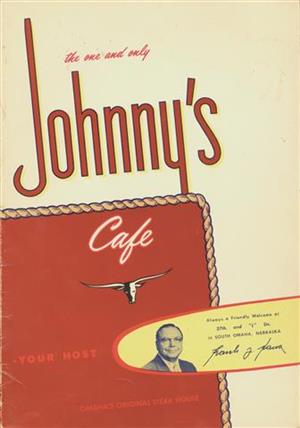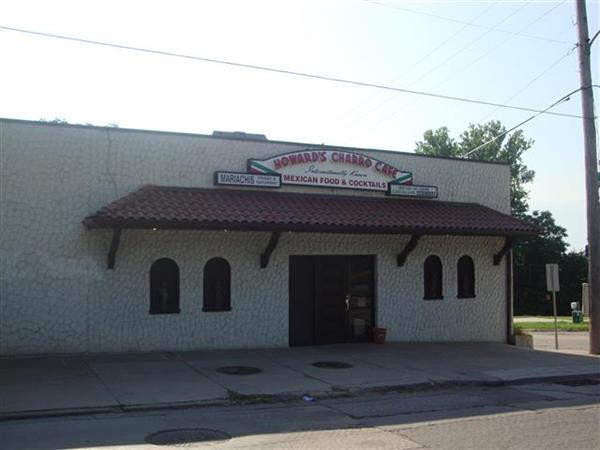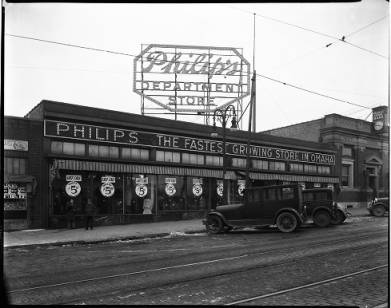Making Invisible Histories Visible
Page Navigation
- Making Invisible Histories Visible
- Lesson Plans and Resources
- iBooks on Omaha and Nebraska History for Primary Students
- Omaha Mapping Projects
-
African American Histories
- African American Artists
- African American Athletes & Facilities
- African American Churches
- African American Civil Rights Organizations - 1950s-1960s
- African American Civil Rights
- African American Contributions to Jazz, Gospel, Hip-Hop
- African American Dramatic Arts
- African American Education - Dorothy Eure & Lerlean Johnson
- African American Educators & Education
- African American Firefighters
- African American Homesteaders
- African American Law Enforcement
- African American Migration to Omaha
- African American Musicians of Omaha
- African American Newspapers
- African American Owned Businesses
- African American Politicians
- African American Social Life
- African American Workers at Omaha's Railroads & Stockyards
- African American Workers at the Naval Ammunition Depot in Hastings
- African Americans in the Civil War
- African Americans in Vietnam
- Charles B. Washington - Journalist and Civil Rights Leader
- Elizabeth Davis Pittman - Lawyer/Judge
- Green Book Omaha
- Marlin Briscoe - Professional Football Player
- Native Omaha Days
- Nebraska's Role in the Underground Railroad
- Sen. Edward Danner - Politician & Civil Rights Activist
- Sudanese Refugees
- Tuskegee Airmen
- European and Asian Immigrant Histories
-
Historic Neighborhoods & Buildings
- 24th and Binney/Wirt/Spencer Streets
- 24th and Lake Streets
- Central Park Neighborhood - 42nd and Grand Avenue
- Dahlman Neighborhood - 10th and Hickory Streets
- Hartman Addition Neighborhood - 16th and Williams Streets
- Indian Hills/Southside Terrace Neighborhood - 30th and Q Streets
- Jefferson Square Neighborhood - 16th and Chicago Streets
- Long Neighborhood - 24th and Clark Streets
- Orchard Hill Neighborhood - 40th and Hamilton Streets
- Smithfield Neighborhood - 24th and Ames Avenue
- St. Mary's Neighborhood - 30th and Q Streets
- Latino Histories
- Music Histories
-
Native American Histories
- Black Elk and John G. Niehardt
- Chief Standing Bear and Susette La Flesche Tibbles
- Dr. Susan LaFlesche Picotte - Native American Doctor
- Native American Education and Boarding Schools
- Native Americans in the Military
- Pre-statehood Interaction of Native Americans and Europeans
- Preserving Native American Tradition
- Restoring the Ponca Tribe
- The American Indian Movement in the 1960s and 1970s
- The Indian Congress at the 1898 Trans-Mississippi Exposition
- The Omaha Native American Indian Tribe
- OPS Elementary School History
- Redlining in Omaha
- Nebraska's Role in the Underground Railroad
- The 1898 Trans-Mississippi Exposition
Immigrant Businesses in South Omaha
-
How did racial or ethnic identity shape business in South Omaha, and what did those businesses mean to their communities?
Continuity and Change - South Omaha's Local Businesses
-
South Omaha has a vast history of cultures and lifestyles. With each immigrant group, there were those who wanted to start a business. These businesses have helped shape South Omaha into what it is today. The different immigrant groups brought their own identities and transferred them into the businesses we see today. South Omaha has many identities: Polish, Irish and Mexican to name a few. In 2013, you still see Southern and Eastern European influence in the businesses in Little Italy and Bohemia. If you open your eyes, you could travel the world looking through local businesses without even stepping on an airplane.
A 2 minute video in 2013 interviewing John Kawa with Johnny’s Café and info on Old Vienna Café and Philip’s Department Store.
The Chief Theater
-

It’s a warm summer's day in South Omaha. Your family parks the ’47 Chevrolet on 24th Street, which is already packed with bustling people. Everyone is crowding around the weeks-old Chief Theater on 24th and K streets and you gape at the giant neon Indian head that can be seen from blocks away. Your family buys tickets to Possessed with Joan Crawford and Van Heflin, perhaps. You walk in and a wave of cold, crisp, clean air washes over you from the air conditioners. Your mother asks if you want ice cream and you nod enthusiastically. You then skip over to the state of the art ice cream bar and you decide on a banana split. Your family walks into the theater and sits down; you sink into the plush seats and recline back. You look up at the colorful blacklight murals of Indian scenes of the Wild West. The theater darkens and everyone quiets down. That is a typical day at the Chief Theater. This quarter of a million-dollar theater opened on April 5, 1947, and was equipped with one large auditorium with blacklight murals, an ice cream bar, a crying room for babies, air conditioning, water fountains, state of the art sound systems, even hearing aids for the hearing impaired, and much, much, more. The first attraction to come to the theater was “The Jolson Story” and a parade was scheduled for an April Saturday, but got rained out. The giant neon Indian head out front identifies the Chief. This picture depicts its popularity until its last day on Dec. 10, 1972. It proceeded to be knocked down and turned into the Wells Fargo we see in 2013. Next time you pass by, try to imagine the Chief Theater in all its glory.
Johnny's Cafe
-
 Frank Kawa established Johnny’s restaurant in 1922. It started as a sandwich shop and then expanded into a steak, prime rib, and seafood restaurant. After Frank’s death, his sons, Tom and Jack Kawa, took over the restaurant.
Frank Kawa established Johnny’s restaurant in 1922. It started as a sandwich shop and then expanded into a steak, prime rib, and seafood restaurant. After Frank’s death, his sons, Tom and Jack Kawa, took over the restaurant.Johnny’s got its meat from the stockyards, which gave them lots of publicity in newspapers. However, after the stockyards closure, Johnny’s had to stop serving breakfast due to less traffic in the area.
In 2013, Johnny’s was owned by Frank’s granddaughters, and still serves tasty steaks in their same location.
Howard's Charro
-
Dolores Wright established Howard’s Mexican restaurant in 1958. Howard’s got its name from Howard Leobardo Castaneda, Dolores' father. Howard’s is one of the oldest Mexican restaurants in South Omaha.
Dolores’ family is very involved in the restaurant and their culture. They also have traditions they keep in Howard’s. They first started the business in a house located at 5407 S. 24th St. They have moved to several different buildings over the years, but one thing that hasn’t changed is the food. Howard’s has used the same recipes over their many years in business.
Howard’s also has very faithful customers that take the whole family to eat. Dolores has even sent food to Florida, Boston, and Phoenix to faithful customers who have moved.
In 2013, Howard’s is still an important part of the community and has expressed their culture and family through food.

Philip's Department Store
-

If you have lived in Omaha in the 20th century, you have probably heard of Philip's Department Store. Romanian Immigrant Philip Greenberg started it as a small fruit stand on South 10th Street. It rapidly grew and collected the nickname “The fastest-growing store in Omaha.” The first store in South Omaha was opened in June 1916 on 24th Street. Business was booming and Philip's was building a good reputation in the community. Then, on one fateful Christmas Eve in 1938, Philips burned down. The community contributed until enough money was raised to open it once again in June of 1939, going from 1,200 square feet to 70,000 square feet. Philip's represented charity and stability. Philip Greenberg was known as an idol in the community. In 1946, Philip retired from the store and left the business to his two sons, Sam and Henry. Sam served on many community boards, was named King of Aksarben, and was known as “Mr. South Omaha.” He was generous and helped the community turn into what it is now. Sam “never knew a stranger” in South Omaha. Philip's soon grew into stores that contained a pharmacy, bakery, grocery store, appliance store, and clothing store. Soon there were stores in Omaha, Fremont, and Council Bluffs. Half-size stores in Lincoln and Rockbrook Village in Omaha also opened in later years. Philip's workforce grew from 175 in 1970 to 350 in 1978. Some of Philips mottoes included: “ Quality at the right price” and “Service to our customers from the smallest detail to the greatest.” After suffering several injuries in a car accident, Sam Greenberg died on Nov. 25, 1988. With the death of Sam, Philip's stores closed one by one. Philips will always be remembered as a big part of South Omaha’s development.
Additional Information
-
The business history of South Omaha is intricately tied to the broader history of immigration to Omaha. South Omaha emerged out of late 19th-century efforts to create a livestock center near Omaha. With access to the Missouri River and railways, South Omaha soon became a hub for the livestock exchange and meatpacking industry. The Omaha stockyards eventually became the largest in the world, attracting immigrants from around the globe. Along with the Union Pacific Railroad, the stockyards and packing houses spurred an immigration boom, and by 1900 a quarter of the population of Omaha was foreign-born and nearly half reported foreign parentage. These statistics would not begin to decline until the 1930s and 1940s.
Although consistently large numbers of immigrants came to the United States during the late 19th and early 20th century, they did not all come from the same place. Before 1910, large numbers of immigrants came from Germany, Ireland, Scandinavia, and England. After 1910, the majority of immigrants came from Italy, Poland, Russia, and Bohemia (roughly contemporary Czech Republic). African Americans also moved to the city during this time period, as did many Mexicans who formed the foundation of South Omaha’s Hispanic community.
These immigrants not only worked in the stockyards but also created businesses that supported the meatpacking industry and served the people of the South Omaha community. Numerous businesses that reflected the immigrants' cultural heritage, such as restaurants, bakeries, and general stores, opened in South Omaha. Twenty-Fourth Street became the business hub of South Omaha, sporting numerous immigrant-owned and operated businesses. However, with the decline of the packing houses and the stockyards in the 1970s and 1980s, as well as the mid-century phenomenon of suburbanization, South Omaha underwent an economic and demographic transformation.
By the late 20th century, a majority of the local businesses in South Omaha had shut their doors, and those that remained, such as Johnny’s Cafe, struggled to survive. 24th Street, once the bustling hub of South Omaha business, resembled a ghost town. With the closure of the large meatpacking plants, the industry evolved to emphasize small, mechanized, non-union plants. These new plants attracted immigrants from Mexico and Central America, and by the 1990s Spanish was the language on the floor of nearly every packing house. These immigrants did not stay in the packing houses and began purchasing 24th Street's empty storefronts. Mexican restaurants and bakeries, as well as other Hispanic-owned businesses, sprang up in South Omaha, spurring economic and community revitalization. In 2013, South Omaha is experiencing an economic resurgence due in large part to the entrepreneurial spirit of its Hispanic immigrants.
2013 MIHV Project
Student Reflections
-
"When I first walked into camp I honestly didn’t believe I’d relate to this project at all. Yet by doing this research I’ve discovered how much the African-American community has affected me. From things as simple as food or music it has influenced aspects of my life. This camp has changed me in so many ways and most likely changed me in ways I don’t even know about yet."
- Brandon H.
"It was really cool to find out about the different cultures in North Omaha. It really surprised me to discover the histories of other cultures like the Eastern European and Jewish immigrants who moved to Omaha. It was really cool to do research on someone whose history was lost for so long. I couldn't imagine being buried without anyone knowing where I was. The knowledge I learned here will follow me for the rest of my life."- Malik W.
"This camp was a great experience and gives us a one-up on the rest of our peers when we go back to school. I will be able to walk away with a vast amount of knowledge and I didn’t learn it from a textbook or from taking notes but was given hands on opportunities to learn. I don’t know why anyone would turn down the chance to be in this camp."- Tessa H.
Resources
-
“About South Omaha - Past.” South Omaha Business Association.
https://www.southomaha.org/aboutso/past.aspx
Douglas County Historical Society.
https://www.omahahistory.org/
Garza, James A. “The Long History of Mexican Immigration to the Rural Midwest.” Journal of the West. Fall 2006, Vol. 45, No. 4.
Kawa, Frank. Interview by Susana Pettis and Naomi Sagitteh, July 15. Digital recording with video
Ray, Tina. Interview by Susana Pettis and Naomi Sagitteh, July 16. Walking tour of 24th St. businesses.
“Reconnaissance Survey of South Omaha: Nebraska Historic Buildings Survey.” Nebraska Historical Society. June, 2005.
https://archive.org/details/ReconnaissanceSurveyOfPortionsOfSouthOmahaNebraskaHistoricBuildingsSurvey/mode/2up"Reconnaissance Survey of Portions of South Omaha," 2008 https://archive.org/details/SouthOmaha2008/mode/2up
The Durham Museum’s Photo Archive.
https://www.durhammuseum.org/experience/photo-archive.aspx
Research compiled by: Susana P., Naomi S.

